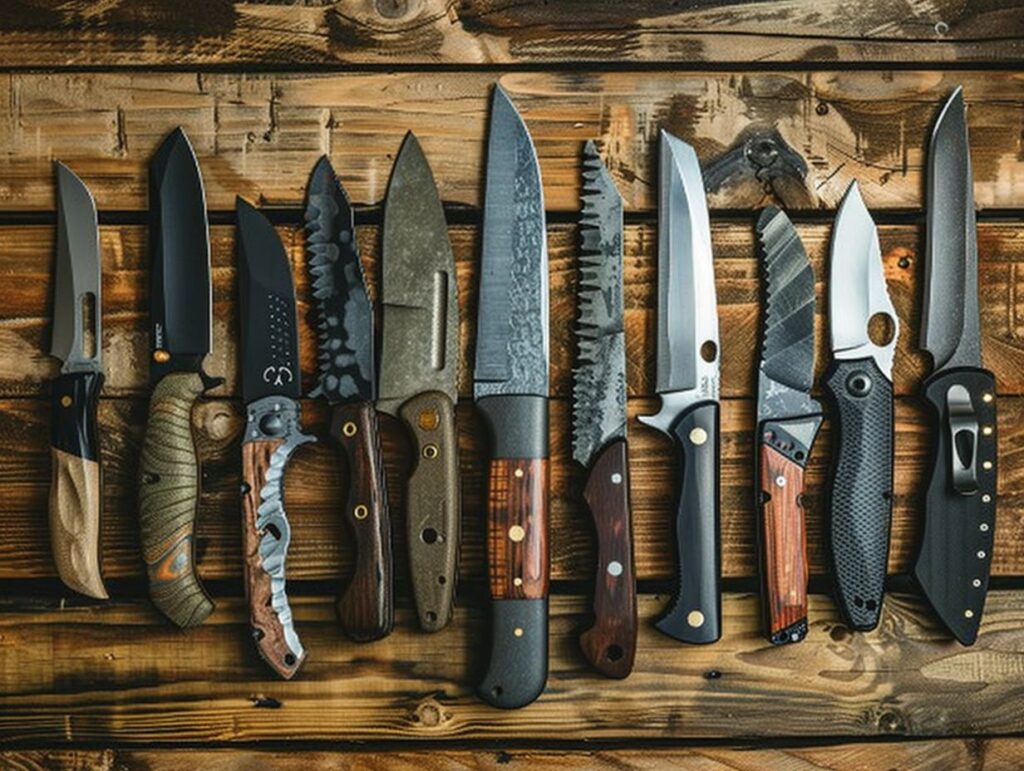Are you an outdoor enthusiast looking to enhance your camping experience? One essential tool you need is a camping knife. But with so many options available, how do you choose the right one for your needs?
We will discuss the important factors to consider when selecting a camping knife, the different types of camping knives available, and how to properly maintain your knife for optimal performance. Whether you’re a seasoned camper or a beginner, read on to learn everything you need to know about camping knives.
Key Takeaways:
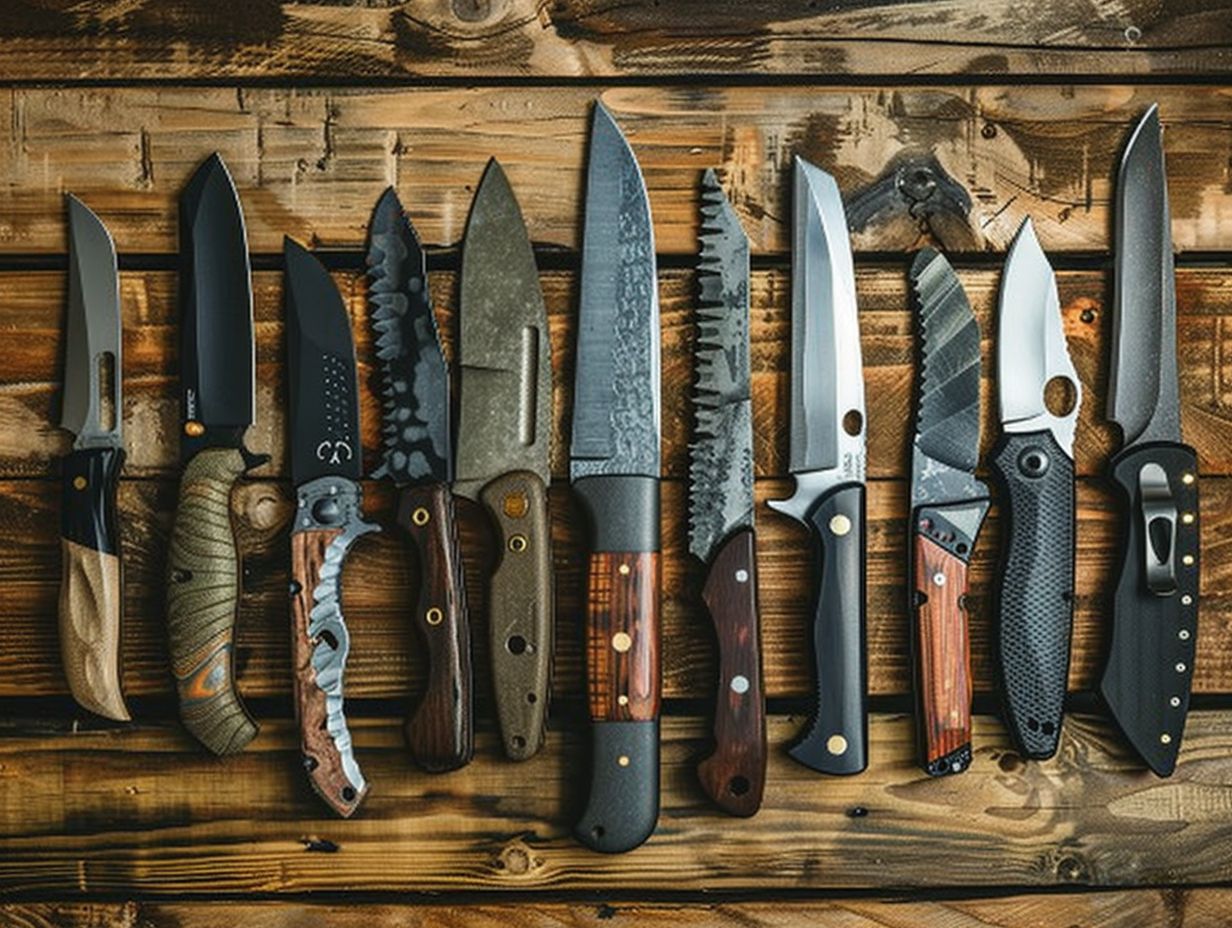
- Choose a camping knife with a durable blade material, appropriate size and shape, and a comfortable handle material.
- Consider the type of camping activities you will be doing and choose between a fixed blade or folding blade, as well as a multi-tool or single blade.
- Maintain your camping knife by regularly cleaning, drying, sharpening, and lubricating the blade, and storing it properly to extend its lifespan.
What to Consider When Choosing a Right Camping Knife?
In the selection of a camping knife, it is imperative to carefully evaluate various factors to ensure that it aligns effectively with the individual’s survival knife requirements. These factors encompass the examination of:
- the blade material
- the dimensions and structure of the blade
- the composition of the handle
- the design of the sheath for secure storage purposes
1. Blade Material
The choice of blade material in a camping knife is a critical factor that significantly impacts its performance and longevity. Common options include carbon steel and stainless steel, each possessing distinct properties tailored for specific tasks.
Carbon steel, such as 1095 steel, is renowned for its high hardness and exceptional edge retention, making it well-suited for rugged tasks in outdoor environments. However, it necessitates regular maintenance to prevent rust formation.
Conversely, stainless steel variations like VG10 and Sandvik 12C27 provide enhanced corrosion resistance, resulting in lower maintenance requirements but are typically slightly less hard than carbon steel. CoS steel offers a compromise between the two, delivering a balance of good edge retention and corrosion resistance.
AUS8 represents another stainless steel alternative that is relatively easier to sharpen but may not retain its edge for extended periods. Böhler N690 is a stainless steel recognised for its superior edge retention and wear resistance, making it a suitable choice for demanding camping scenarios.
2. Blade Shape and Size
When choosing a camping knife, it is crucial to take into account the shape and size of the blade as they play a significant role in determining the knife’s effectiveness in various survival scenarios.
Blade shape is a critical consideration, as each shape is adept at specific tasks: the drop point design is versatile for general use, the clip point excels in precision slicing, and the tanto shape is particularly suited for piercing tough materials.
Additionally, blade size not only influences the knife’s portability but also its functionality. Whilst a larger blade may provide increased cutting power, a smaller blade offers enhanced manoeuvrability and ease of carry. By comprehending these factors, individuals can make informed decisions when selecting a camping knife that aligns with their requirements for outdoor pursuits.
3. Handle Material
The selection of handle material for a camping knife is a crucial factor in ensuring both a comfortable grip and durability. Common options include Micarta, G10, rubber, and wooden handles, each presenting unique advantages.
Micarta, a composite material composed of layers of linen, paper, fibreglass, or carbon fibre, is highly regarded for its robustness, resistance to moisture, and tactile properties.
G10, characterized by its lightweight nature and durability, delivers exceptional grip particularly in wet conditions. Rubber handles are prized for their remarkable shock absorption and non-slip surface, making them well-suited for tasks necessitating precision.
Conversely, wooden handles are celebrated for their natural warmth and visual appeal, although they may require more frequent maintenance to preserve their condition. Ultimately, the choice of handle material significantly influences the knife’s feel and performance during camping excursions and outdoor pursuits.
4. Fixed Blade vs Folding Blade
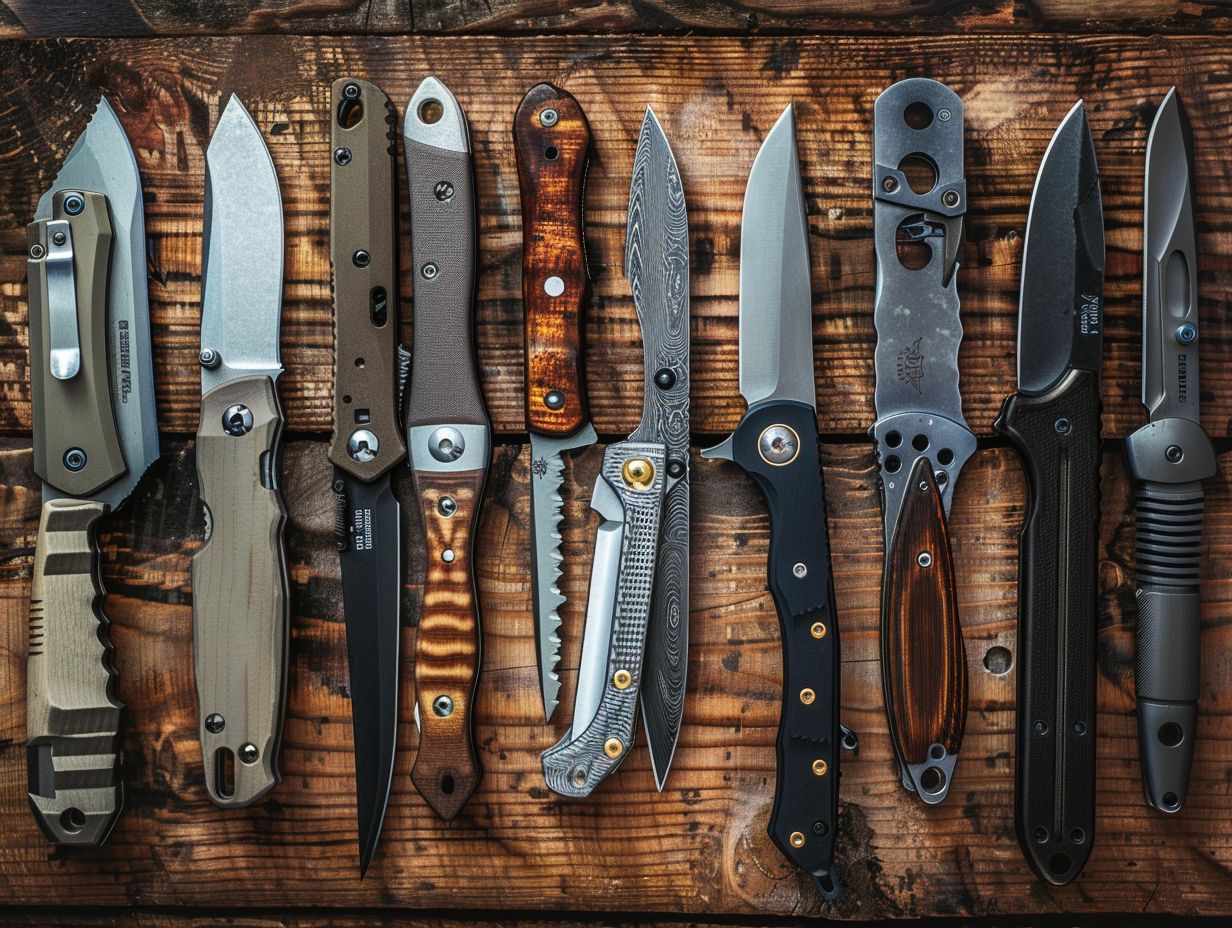
The selection between a fixed blade and a folding blade camping knife hinges on the intended use and personal preference. Fixed blades are known for their superior strength and reliability, whilst folding blades offer convenience and portability.
In survival contexts where tasks like wood chopping or game processing are crucial, the durability and blade length of a fixed blade knife make it highly efficient and safer for demanding activities.
Conversely, a folding blade knife is well-suited for everyday carrying and scenarios where discretion and compactness are vital, such as urban settings or situations with limited space. Whilst fixed blades are renowned for their durability, folding knives provide ease of access and cater to on-the-go requirements.
5. Multi-tool vs Single Blade
The choice between a multi-tool and a single-blade camping knife often hinges on the range of tasks anticipated, with multi-tools offering versatility and single blades providing robust performance for specific tasks.
For example, a multi-tool typically incorporates various functions such as pliers, screwdrivers, scissors, and tin openers, rendering it suitable for a wide range of activities including repairs, cooking, and emergency situations.
On the contrary, a single-blade knife excels in activities that necessitate precise cutting, such as carving wood for shelter construction or skinning game during hunting.
The critical factor lies in evaluating one’s specific needs and the tasks expected to be encountered in the wilderness to determine which tool would best serve camping or survival purposes.
6. Weight and Size
The consideration of weight and size in a camping knife is crucial, as these factors impact its portability and usability across various scenarios. Therefore, it is imperative to find an equilibrium that aligns with the specific needs of a survival knife.
When choosing a camping knife, individuals should evaluate the intended activities they will be undertaking. For tasks that demand precision and delicacy, a lighter and compact knife may offer enhanced control and manoeuvrability.
On the contrary, for more strenuous activities such as wood chopping or meal preparation, a larger and heavier knife could provide the necessary strength and leverage. Striking a harmonious balance that complies with the planned camping endeavours is paramount, ensuring both user comfort and functionality in diverse situations.
7. Price
The cost is a significant consideration in the selection of a camping knife as it tends to be indicative of the knife’s quality, brand, and features, with higher-priced models typically boasting superior materials and craftsmanship.
When assessing the pricing tiers of camping knives, it is essential to recognise that budget-friendly alternatives can still deliver satisfactory performance for intermittent outdoor use. Knives falling within the mid-range category often strike a commendable balance between quality and affordability, featuring robust blades and ergonomic grips.
Conversely, premium camping knives carry a higher price point due to their employment of top-tier steel, sophisticated blade configurations, and ergonomically designed handles tailored for professional campers or outdoor enthusiasts who require precision and longevity in their equipment.
What are the Different Types of Camping Knives?
Various types of camping knives are available, each specifically crafted to meet diverse needs and preferences. These include fixed blade knives, folding knives, multi-tool knives, and machetes, all of which can be conveniently sourced from a comprehensive selection of survival knives.
1. Fixed Blade Knives
Fixed blade knives are renowned for their strength and dependability, often characterized by full-tang construction, rendering them well-suited for rigorous tasks in survival scenarios.
Their resilient design ensures their capability to endure the demands of challenging activities like wood chopping, shelter construction, or outdoor food preparation. The simplicity of their construction facilitates ease of cleaning and maintenance, a critical aspect in isolated wilderness settings.
These knives are esteemed by outdoor enthusiasts, hunters, and survivalists for their sturdiness and adaptability. Whether in the context of bushcraft, hunting, or camping, a fixed blade knife serves as a valuable instrument adept at efficiently managing a variety of cutting and slicing requirements.
2. Folding Knives
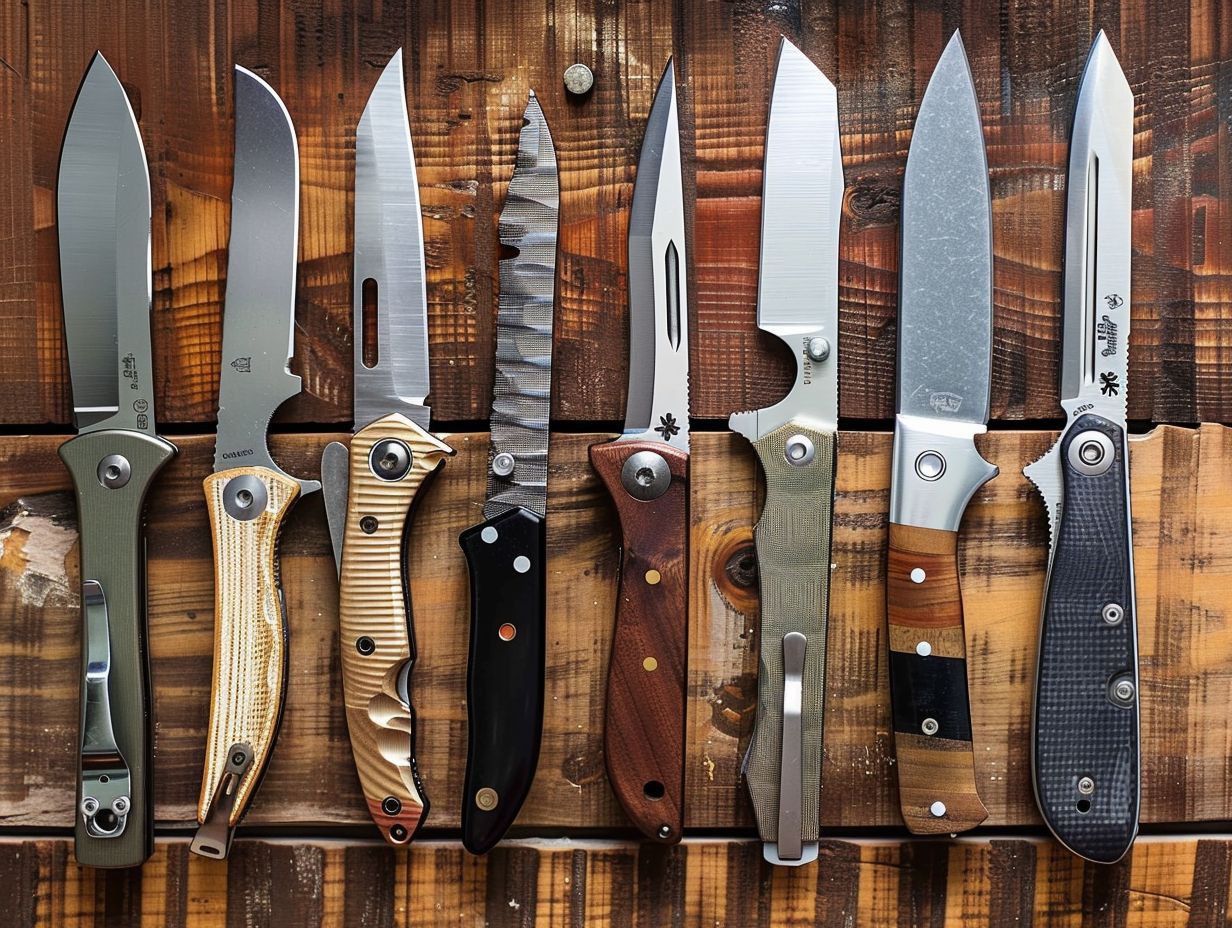
Folding knives are widely favoured for camping purposes due to their compact dimensions and ease of portability, rendering them a convenient inclusion in any assortment of survival equipment.
The utility of folding knives transcends the realm of camping, as they prove to be equally advantageous in everyday scenarios such as unboxing parcels, cutting ropes, or even food preparation during hiking excursions or picnics.
The capacity to retract the blade into the handle not only bolsters safety during transit but also mitigates the likelihood of accidental lacerations when the knife is not in operation.
For individuals with a penchant for outdoor pursuits, the proximity of a folding knife provides a tangible sense of readiness for unforeseen circumstances, whether it pertains to emergency situations or merely facilitates ease and practicality during recreational pursuits.
3. Multi-tool Knives
Multi-tool knives are highly versatile tools that are specifically crafted to handle a wide range of tasks. They often contain multiple blades and tools integrated into one compact package, rendering them an critical component of any survival kit.
These practical devices offer exceptional multifunctionality, incorporating features such as pliers, screwdrivers, tin openers, and even scissors into their design.
For individuals engaged in camping activities, a multi-tool knife provides the convenience of consolidating all essential tools into a single item, thereby minimising the necessity of carrying multiple separate tools.
In situations requiring survival skills, these knives can serve as invaluable assets, supplying vital utilities for tasks such as constructing shelter, preparing food, or repairing equipment. Whether the task involves cutting ropes, opening cans, or tightening screws, a multi-tool knife stands as an essential companion for outdoor enthusiasts.
4. Machetes
Machetes are substantial and versatile blades primarily intended for heavy-duty applications such as clearing scrub and chopping wood, making them invaluable tools in specific survival circumstances.
Their sharp edges and robust build make them well-suited for cutting through dense vegetation, establishing shelter, food preparation, and even self-defence in wilderness environments. The weight and balance of a machete facilitate forceful swings, enableing users to deal with challenging materials effectively.
While machetes excel in demanding terrains, their dimensions and weight may present challenges for individuals looking for lightweight equipment or requiring precise cutting capabilities. Proficiency in the safe handling and maintenance of a machete is essential to maximise its effectiveness and durability in camping and survival settings.
How to Properly Maintain Your Camping Knife?
Ensuring the proper maintenance of your camping knife is essential for preserving its longevity and performance. This maintenance regime includes routine cleaning, sharpening, lubrication of the blade, and appropriate storage techniques to maintain both the blade and handle in optimal condition.
1. Regular Cleaning and Drying
Regular maintenance practices, such as cleaning and drying, are imperative to prevent rust and corrosion on both the blade and handle of your camping knife, thereby ensuring its durability and dependability.
For the proper cleaning of your camping knife, it is advised to initiate the process by carefully wiping off any dirt or debris present on the blade and handle using a damp cloth or sponge. Subsequently, utilise a mild soap and warm water to delicately wash both the blade and handle, ensuring not to fully immerse the knife.
Following the cleaning procedure, it is vital to diligently dry the knife with a soft cloth to eliminate any residual moisture. To uphold the sharpness of the blade, the application of a specialised knife oil or lubricant is recommended to shield it from oxidation.
Finally, it is advisable to store your clean and dry knife in a cool, dry environment that is devoid of moisture and humidity, further safeguarding it from rust and corrosion.
2. Sharpening and Honing
Regular maintenance of your camping knife is essential for ensuring a sharp blade, which in turn improves its effectiveness and safety during use, guaranteeing that your survival knives are consistently prepared for any situation.
To achieve optimal results, it is necessary to utilise specific tools such as sharpening stones, honing rods, or sharpening systems. When sharpening the knife, the first step is to determine the correct angle at which to hold the blade against the sharpening surface.
Applying gentle pressure and maintaining even strokes is vital for achieving uniform sharpening. Equally important is the honing process, which serves to refine the blade edge and eliminate any burrs that may have developed during sharpening.
A sharp blade not only simplifies tasks but also minimises the risk of accidents that may result from slips or imprecise cuts.
3. Lubricating the Blade
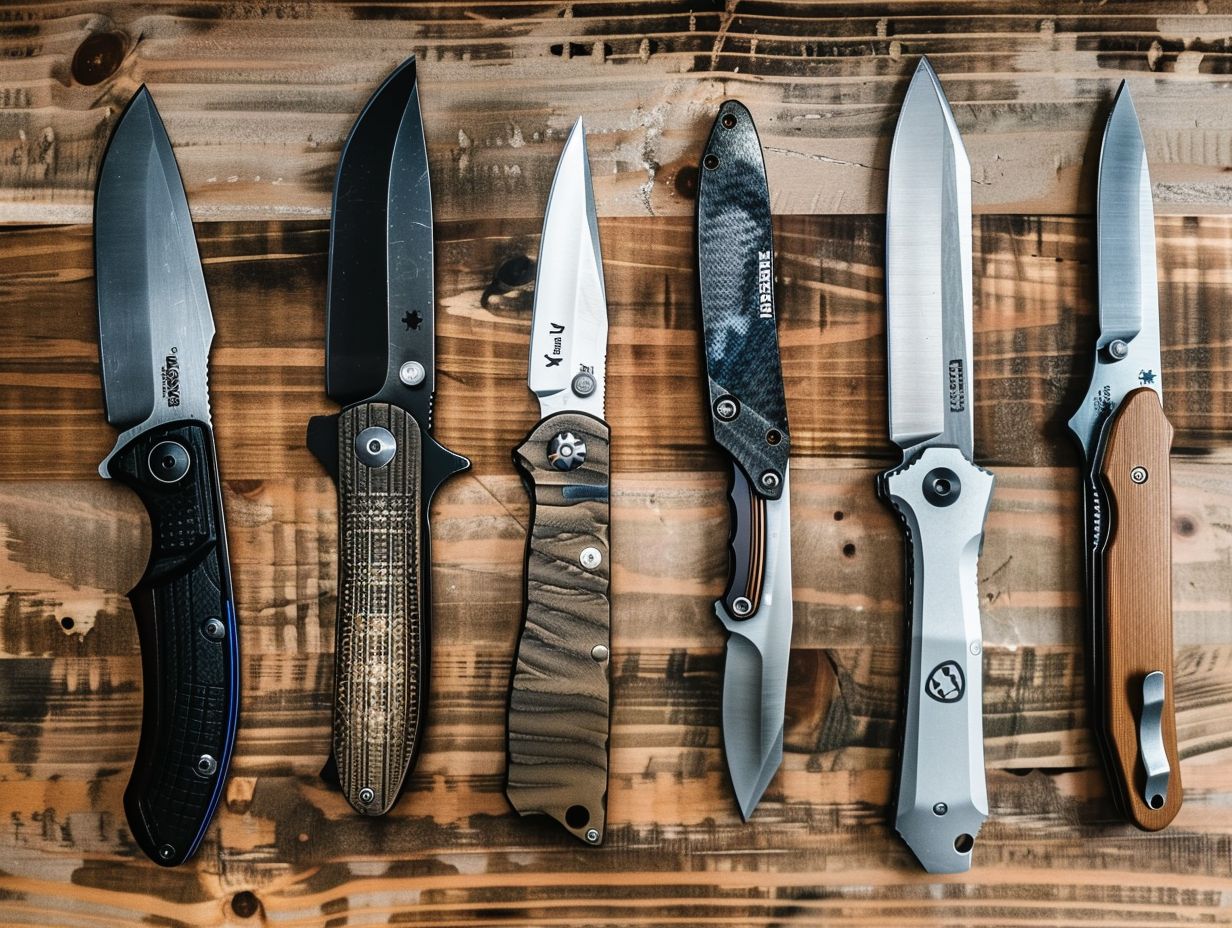
Maintaining the blade of a camping knife through lubrication is a crucial task, particularly for carbon steel blades, as it helps prevent rust and guarantees optimal functionality.
Selecting the appropriate lubricant for a camping knife hinges upon the type of material the blade is made from. For carbon steel blades, it is advisable to employ a light oil or a specialised knife lubricant to shield the metal from moisture and oxidation.
In the case of stainless steel blades, a silicone-based lubricant is the preferred choice to stave off corrosion. Effective lubrication not only prolongs the lifespan of the blade by minimising friction but also ensures the smooth operation of opening and closing mechanisms.
To lubricate a knife correctly, it is recommended to first cleanse the blade with a solvent to eliminate any dirt or residue. Subsequently, a thin layer of the selected lubricant should be applied along the blade, pivot, and locking mechanism for optimal results.
4. Proper Storage
The appropriate storage of a camping knife involves placing it in a suitable sheath to safeguard both the blade and handle from potential damage and exposure to the elements, thereby preserving its optimal condition.
When determining the storage location for your camping knife, it is imperative to consider the environmental conditions present. Extreme temperatures, excessive moisture levels, or prolonged sunlight exposure can all contribute to adverse effects on the blade’s composition, resulting in corrosion and a dulled edge.
To mitigate these risks, it is advised to store the knife in a dry, cool area that is shielded from direct sunlight. Regularly conducting inspections of the sheath is recommended to identify any indications of wear or moisture accumulation, as these factors can also influence the knife’s durability.
By adhering to these precautions, individuals can prolong the lifespan of their camping knife and ensure it remains prepared for any outdoor excursions.
Frequently Asked Questions
What factors should I consider when choosing a camping knife?
When choosing a camping knife, it’s important to consider the blade material, blade size and shape, handle material and grip, and overall weight and portability.
What type of blade material is best for a camping knife?
The best blade material for a camping knife is one that is durable, corrosion-resistant, and holds a sharp edge. High carbon stainless steel and titanium are often recommended for camping knives.
What size and shape blade is best for camping?
The ideal size and shape of a camping knife blade will depend on your personal preferences and intended use. However, a blade length between 3 to 5 inches and a clip point or drop point shape are popular choices for camping knives.
What type of handle material is best for a camping knife?
The best handle material for a camping knife should provide a comfortable and secure grip, even in wet or slippery conditions. Common options include durable synthetic materials like G-10, Micarta, or rubber-coated grips.
What is the ideal weight and portability for a camping knife?
The ideal weight and portability for a camping knife will depend on your specific needs and preferences. However, a lightweight and compact design is typically recommended for easy carrying and use while camping.
How should I test a camping knife before purchasing?
Before purchasing a camping knife, it’s important to test its sharpness, balance, and overall feel in your hand. You should also consider the knife’s warranty and read reviews from other campers who have used the knife before.

